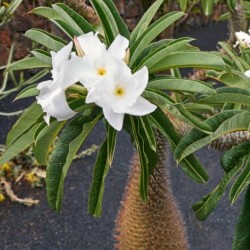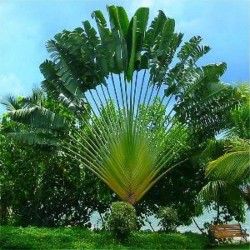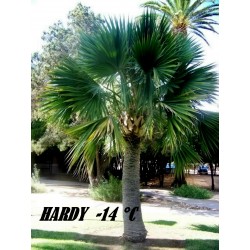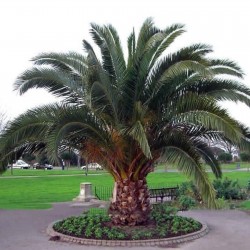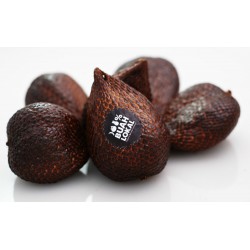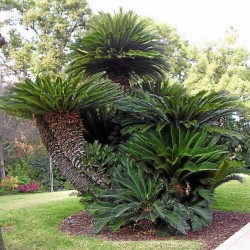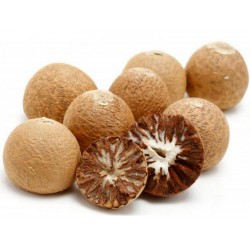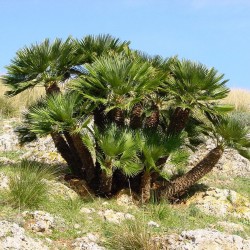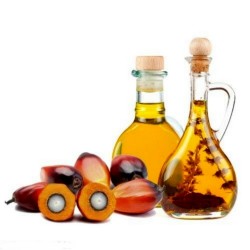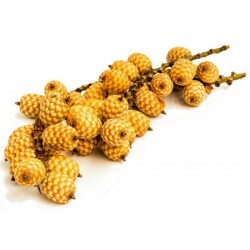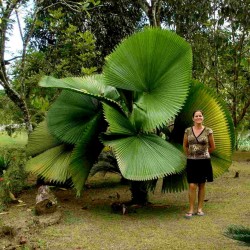
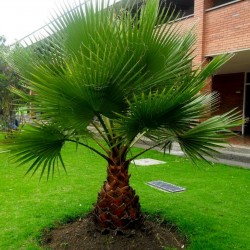
Βαμβάκι φοίνικα, Καλιφόρνια...
Τιμή
1,95 €
SKU: PS 1
Seeds Gallery Com,
5/
5
<h2 class=""><strong>Βαμβάκι φοίνικα, Καλιφόρνια Fan Palm σπόροι (Washingtonia filifera)</strong></h2>
<h2><span style="color: #ff0000;"><strong>Τιμή για το πακέτο των 3 σπόροι.</strong></span></h2>
<p>Καλιφόρνια Fan Palm Tree και φροντίδα? Επίσης γνωστό ως filifera Washingtonia, αναπτύσσονται κυρίως σε επιμέρους τροπικές περιοχές. κορμούς τους είναι τεράστιο βαρέλι και διαμορφώνεται. Είναι δακτυλιώθηκε με φοβίζει των παλιών φύλλων. Παράγουν πολλά λουλούδια υποκαταστημάτων που είναι άσπρο ή κίτρινο χρώμα. Αυτές οι εγκαταστάσεις δεν είναι κατάλληλες για βροχερή περιοχές. Αγαπούν αποστραγγιζόμενο καλά στο έδαφος. Αν το νερό διατηρείται, τότε τις ρίζες των φυτών θα εξακολουθήσουν να διασπώνται μακριά. Τα φυτάρια αυτού του δέντρου πρέπει να είναι καλά προστατευμένη από τους ανέμους και τυχόν σημαντικές αλλαγές της θερμοκρασίας. Μόλις φυτεύονται οι σπόροι, που θα τις λάβει τουλάχιστον 15 εβδομάδες για να βλαστήσουν. Το έδαφος στο οποίο οι σπόροι των φυτών μπορεί να είναι ένα μείγμα άμμου, μάργες και η τύρφη. Μόλις ο δενδρύλλια αρχίζουν να αυξάνονται, βεβαιωθείτε ότι ως μέρος φροντίδας παλάμης ανεμιστήρα, παίρνει αρκετό φως του ήλιου. Εάν ανησυχείτε για το δέντρο έχει μολυνθεί, δεν χρειάζεται να ανησυχούν, επειδή δεν υπάρχουν τέτοιες ασθένειες έχουν ακούσει για ακόμα.</p>
<div>
<p> </p>
<div>
<table cellspacing="0" cellpadding="0" border="1">
<tbody>
<tr>
<td colspan="2" width="100%" valign="top">
<p><span><strong>Sowing Instructions</strong></span></p>
</td>
</tr>
<tr>
<td valign="top" nowrap="nowrap">
<p><span><strong>Propagation:</strong></span></p>
</td>
<td valign="top">
<p><span>Seeds</span></p>
</td>
</tr>
<tr>
<td valign="top" nowrap="nowrap">
<p><span><strong>Pretreat:</strong></span></p>
</td>
<td valign="top">
<p><span>soak in water for 3-4 hours</span></p>
</td>
</tr>
<tr>
<td valign="top" nowrap="nowrap">
<p><span><strong>Stratification:</strong></span></p>
</td>
<td valign="top">
<p><span>0</span></p>
</td>
</tr>
<tr>
<td valign="top" nowrap="nowrap">
<p><span><strong>Sowing Time:</strong></span></p>
</td>
<td valign="top">
<p><span>all year round</span></p>
</td>
</tr>
<tr>
<td valign="top" nowrap="nowrap">
<p><span><strong>Sowing Depth:</strong></span></p>
</td>
<td valign="top">
<p><span>1 cm</span></p>
</td>
</tr>
<tr>
<td valign="top" nowrap="nowrap">
<p><span><strong>Sowing Mix:</strong></span></p>
</td>
<td valign="top">
<p><span>Coir or sowing mix + sand or perlite</span></p>
</td>
</tr>
<tr>
<td valign="top" nowrap="nowrap">
<p><span><strong>Germination temperature:</strong></span></p>
</td>
<td valign="top">
<p><span>min. 20 ° C</span></p>
</td>
</tr>
<tr>
<td valign="top" nowrap="nowrap">
<p><span><strong>Location:</strong></span></p>
</td>
<td valign="top">
<p><span>bright + keep constantly moist not wet</span></p>
</td>
</tr>
<tr>
<td valign="top" nowrap="nowrap">
<p><span><strong>Germination Time:</strong></span></p>
</td>
<td valign="top">
<p><span>until it germinates </span></p>
</td>
</tr>
<tr>
<td valign="top" nowrap="nowrap">
<p><span><strong>Watering:</strong></span></p>
</td>
<td valign="top">
<p><span>Water regularly during the growing season</span></p>
</td>
</tr>
<tr>
<td valign="top" nowrap="nowrap">
<p><span><strong> </strong></span></p>
</td>
<td valign="top">
<p><br /><span><em>Copyright © 2012 Seeds Gallery - Saatgut Galerie - Galerija semena. </em><em>All Rights Reserved.</em></span></p>
</td>
</tr>
</tbody>
</table>
</div>
</div>
<script src="//cdn.public.n1ed.com/G3OMDFLT/widgets.js"></script>
PS 1 (3 S)

- Νέο




